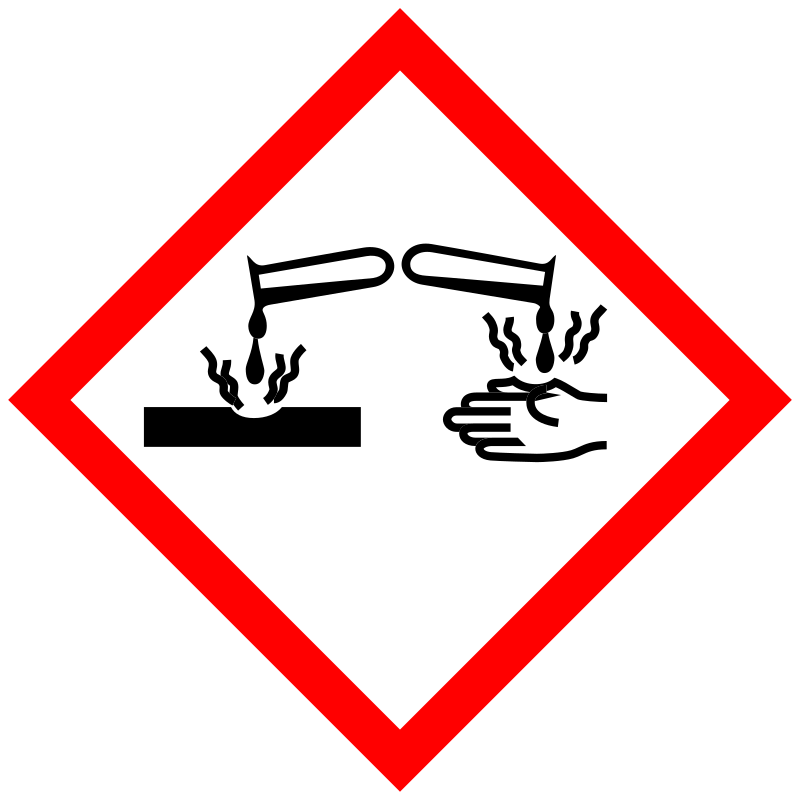D0712 | 4-(butan-2-yl)phenol
| Toxicity | Dose | Time | Species | Model | Method | Action | Positive criterion | Reference |
|---|---|---|---|---|---|---|---|---|
| MEMBRANE POTENTIAL | 31.98±3.64 | human | qHTS-HepG2 | MMP assay | decrease | IC50 | 163 | |
| MEMBRANE POTENTIAL | 35.48 | human | HepG2 | MMP assay | decrease | IC50 | 163 | |
| MEMBRANE POTENTIAL | rat | hepatocytes | MMP assay | Negative | IC50 | 163 | ||
| Pictogram | Signal | Statements | Precautionary Statement Codes |
|---|---|---|---|
  |
Danger |
Aggregated GHS information provided by 145 companies from 5 notifications to the ECHA C&L Inventory. Each notification may be associated with multiple companies. H314 (100%): Causes severe skin burns and eye damage [Danger Skin corrosion/irritation] H318 (37.93%): Causes serious eye damage [Danger Serious eye damage/eye irritation] H400 (26.21%): Very toxic to aquatic life [Warning Hazardous to the aquatic environment, acute hazard] Information may vary between notifications depending on impurities, additives, and other factors. The percentage value in parenthesis indicates the notified classification ratio from companies that provide hazard codes. Only hazard codes with percentage values above 10% are shown. |
P260, P264, P273, P280, P301+P330+P331, P303+P361+P353, P304+P340, P305+P351+P338, P310, P321, P363, P391, P405, and P501; (The corresponding statement to each P-code can be found at the GHS Classification page.) |
   |
Danger |
H302: Harmful if swallowed [Warning Acute toxicity, oral] H314: Causes severe skin burns and eye damage [Danger Skin corrosion/irritation] H318: Causes serious eye damage [Danger Serious eye damage/eye irritation] H371: May cause damage to organs [Warning Specific target organ toxicity, single exposure] H373: Causes damage to organs through prolonged or repeated exposure [Warning Specific target organ toxicity, repeated exposure] |
P260, P264, P270, P280, P301+P312, P301+P330+P331, P303+P361+P353, P304+P340, P305+P351+P338, P309+P311, P310, P314, P321, P330, P363, P405, and P501; (The corresponding statement to each P-code can be found at the GHS Classification page.) |
| Organism | Test type | Route | Dose (normalized dose) | Effect | Source |
|---|---|---|---|---|---|
| mouse | LD50 | intraperitoneal | 66mg/kg (66mg/kg) | Journal of Medicinal Chemistry. Vol. 18, Pg. 868, 1975. | |
| rat | LD50 | oral | 2450mg/kg (2450mg/kg) | Science Reports of the Research Institutes, Tohoku University, Series C: Medicine. Vol. 36(1-4), Pg. 10, 1989. | |
| mouse | LD50 | intravenous | 40mg/kg (40mg/kg) | behavioral: sleep | Journal of Medicinal Chemistry. Vol. 23, Pg. 1350, 1980. |
| 1-Hydroxy-4-sec-butylbenzene | 4-(1-Methylpropyl)phenol | 4-(1-methylpropyl )phenol |
| 4-(2-Butyl)phenol | 4-(Butan-2-yl)phenol | 4-(methylpropyl)phenol |
| 4-s-butylphenol | 4-sec-Butyl-phenol | 4-sec-Butylphenol |
| 4-sec-Butylphenol , 98% | 4-sec-Butylphenol, 96% | 5720AF |
| 99-71-8 | ACMC-209sdt | AI3-18887 |
| AKOS000120841 | ANW-41055 | B0733 |
| BDBM50410505 | BRN 1364714 | C14139 |
| CAS-99-71-8 | CHEBI:34442 | CHEMBL29398 |
| CTK3J2937 | DSSTox_CID_2332 | DSSTox_GSID_22332 |
| DSSTox_RID_76552 | DTXSID7022332 | EINECS 202-781-5 |
| FT-0619464 | InChI=1/C10H14O/c1-3-8(2)9-4-6-10(11)7-5-9/h4-8,11H,3H2,1-2H; | LS-104124 |
| MCULE-2101382058 | MFCD00002375 | NCGC00164058-01 |
| NCGC00164058-02 | NCGC00164058-03 | NCGC00254062-01 |
| NCGC00257970-01 | NE10186 | NSC 2210 |
| NSC-2210 | NSC2210 | P-(SEC-BUTYL)PHENOL |
| Para Sec Butyl Phenol | Phenol, 4-(1-methylpropyl)- | Phenol, p-(sec-butyl)- |
| Phenol, p-sec-butyl- | Q27116072 | RTR-030472 |
| SCHEMBL85692 | ST51037932 | TR-030472 |
| Tox21_200416 | Tox21_300086 | ZUTYZAFDFLLILI-UHFFFAOYSA-N |
| p-(1-Methylpropyl)phenol | p-sec-Butylphenol | para-sec-butylphenol |
| CAS Number | 6556-11-2, 99-71-8 |
| PubChem Compound | 7453 |

